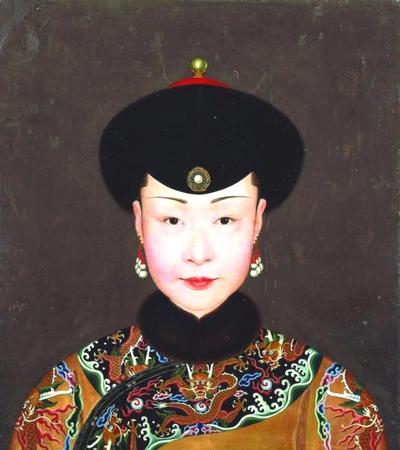
Empress Nara
| Name | Empress Nara |
| Title | Qing dynasty empress (1718-1766) |
| Gender | Female |
| Birthday | 1718-03-11 |
| nationality | Qing dynasty |
| Source | https://www.wikidata.org/wiki/Q575362 |
| pptrace | View Family Tree |
| LastUpdate | 2025-10-27T03:40:43.051Z |
Introduction
The Empress of the Nara clan, born on March 11, 1718, and deceased on August 19, 1766, was a consort of the Qing dynasty's Qianlong Emperor. She was a member of the Manchu Bordered Blue Banner Nara clan and served as empress from 1750 until her death in 1766.
Her early life details are limited, with certain sources indicating her birth date as some time in the second lunar month of an unspecified year, while others suggest she was born on the 10th day of the second month of the 57th year of the Kangxi Emperor's reign. Her father was Narbu, acknowledged in the Genealogy of the Manchu clans as a descendant of Wangginu, a leader of the Hoifa-Nara clan. The family resided in the Hoifa area for several generations, and some modern publications have identified her as a member of the Hoifa-Nara clan. However, there is scholarly debate regarding her maiden clan affiliation, with some sources indicating she was part of the Ula-Nara clan, which is considered the more ancient branch.
Prior to her elevation as empress, she was initially appointed as a secondary consort to Hongli, the future Qianlong Emperor, by his father, the Yongzheng Emperor, before 1735. She gained favor with Hongli during this period. After Yongzheng's death, Hongli ascended the throne as Qianlong, and she was granted the title of Consort Xian on January 23, 1738. Her character and demeanor earned her the favor of the Empress Dowager Chongqing, mother of the Qianlong Emperor. On December 9, 1745, she was promoted to Noble Consort Xian.
Following the death of the first Empress Xiaoxianchun in 1748, Lady Nara was elevated to the position of Imperial Noble Consort in May 1749, with administrative authority over the imperial harem. On August 13, 1750, she was formally appointed Empress after the end of mourning for her predecessor. As empress, she participated in many imperial activities, including leisure trips, hunting expeditions, ancestral worship ceremonies, and accompanied the emperor on various journeys. During her time as empress, she bore three children: Yongji (born June 7, 1752), her unnamed daughter (born July 23, 1753), and Yongjing (born January 22, 1756).
Her downfall began around 1765, during the 30th year of Qianlong's reign. While touring southern China, she allegedly cut her hair, an act considered a grave offense under Manchu customs, which required men to keep their hair in specific styles as a sign of mourning or allegiance. Official records suggest her action was interpreted as a curse upon the emperor and empress dowager. Following this incident, she was ordered to return to the capital, accompanied by Fulong'an. Subsequent records indicate that her privileges and rank were progressively reduced; her imperial edicts, gifts, and imperial seal were confiscated, her maids decreased from ten to two, and her favor with the emperor waned, evidenced by her being conferred the title of Noble Consort Ling, a rank below empress, shortly after her return to Beijing.
She died in the seventh month of the 31st year of Qianlong's reign. Historical sources differ regarding her exact date of death; the Draft History of Qing states she died on the Jiawu day, while modern sources often cite the 14th day of the seventh month. At her death, she was already seriously ill but was not accorded a formal imperial funeral or posthumous name, nor was she buried beside the emperor. Instead, her remains were interred in the Yu Mausoleum of the Eastern Qing tombs, adjacent to Imperial Noble Consort Chunhui, in a scaled-down funeral.
Throughout her life, she held several titles, beginning as Lady Nara during the Kangxi Emperor's reign, progressing through secondary consort, Consort Xian, Noble Consort Xian, Imperial Noble Consort, and ultimately Empress during the Qianlong Emperor's reign. Her issue included Yongji, her son, and her daughter, whose life details are also recorded.
Her life and figure have been represented in various modern media portrayals, with characters inspired by her appearing in television dramas and films.
Family Tree
Tap to expand more relatives